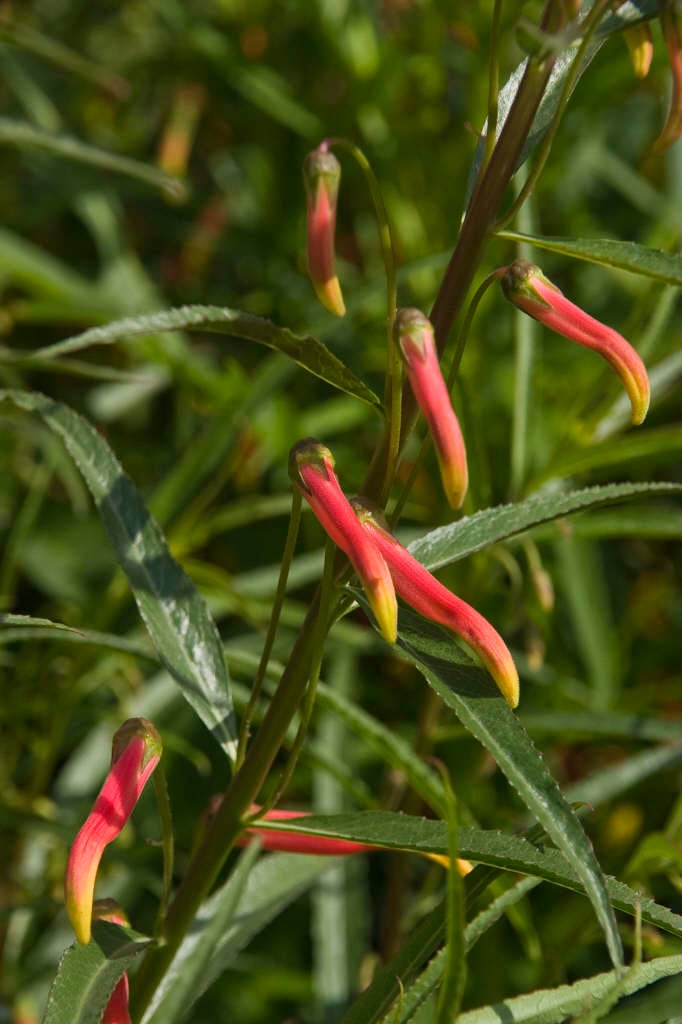Lobelia laxiflora
Sierra Madre lobelia
An herbaceous, woody-based, rhizomatous perennial to 90cm tall, with arching stems bearing long, very narrow leaves and 4cm long tubular red and yellow flowers singly in the upper leaf axils in late spring and summer

Buy this plant
Size
Ultimate height
0.5–1 metresTime to ultimate height
2–5 yearsUltimate spread
1–1.5 metresGrowing conditions
Moisture
Moist but well–drained, Well–drainedpH
Alkaline, NeutralColour & scent
| Stem | Flower | Foliage | Fruit | |
| Spring | Red Yellow | Green | ||
|---|---|---|---|---|
| Summer | Red Yellow | Green | ||
| Autumn | ||||
| Winter |
Position
- Full sun
- Partial shade
Aspect
South–facing or West–facing
Exposure
Sheltered Hardiness
H3Botanical details
- Family
- Campanulaceae
- Native to GB / Ireland
- No
- Foliage
- Deciduous
- Habit
- Bushy
- Potentially harmful
- Harmful if eaten, skin irritant. Wear gloves and other protective equipment when handling Wear gloves and other protective equipment when handling. Pets: Harmful if eaten, skin irritant. For further information and contact numbers regarding pets, see the HTA guide to potentially harmful plants
- Genus
Lobelia can be annuals, perennials or shrubs, with simple leaves and showy 2-lipped flowers that may be solitary or in racemes or panicles
- Name status
Correct
- Plant range
- SW USA to Colombia
How to grow
Cultivation
Of borderline hardiness - protect with a dry winter mulch or lift and store in a frost-free greenhouse. Prefers to be grown in deep, fertile, reliably moist soil in full sun or partial shade
Propagation
Propagate by semi-ripe cuttings
Suggested planting locations and garden types
- City and courtyard gardens
- Coastal
- Cottage and informal garden
- Flower borders and beds
Pruning
Cut back after flowering
Pests
May be susceptible to slugs
Diseases
May be susceptible to crown rot
Get involved
The Royal Horticultural Society is the UK’s leading gardening charity. We aim to enrich everyone’s life through plants, and make the UK a greener and more beautiful place.